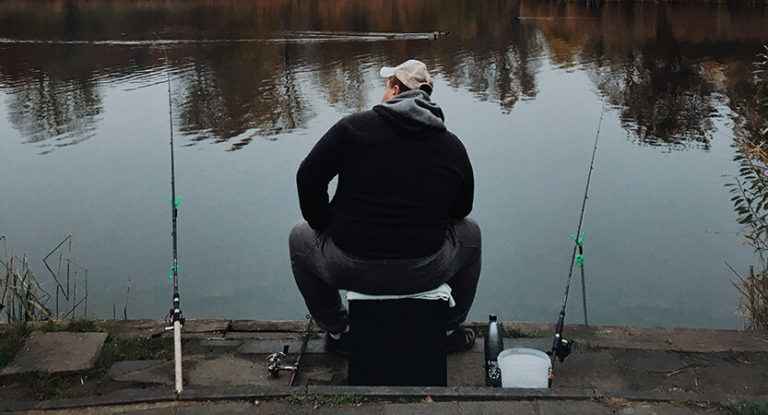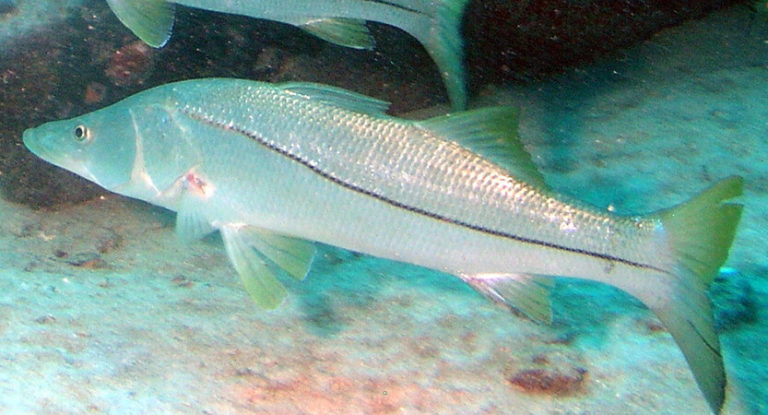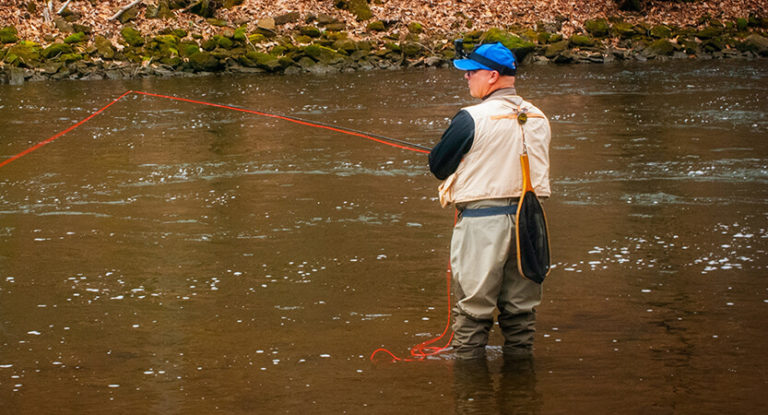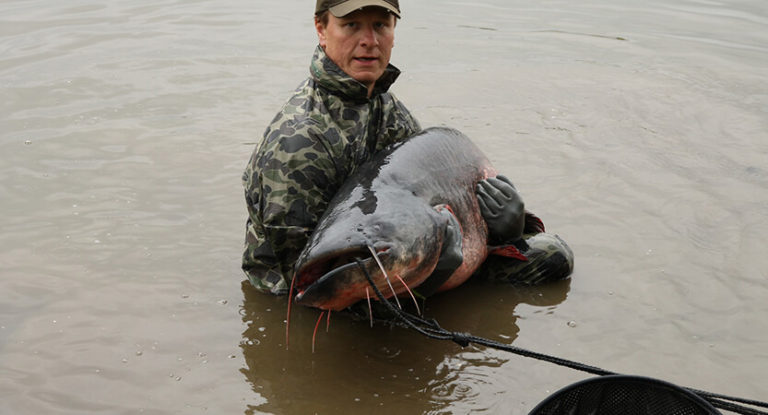Oh, this excitement that makes true anglers sacrifice the benefits of civilization and break away from their favorite sofas! Sometimes a fishing fan forgets about everything in anticipation of a rendezvous with a pond and a duel with prey sparkling scales. But there are things that cannot be neglected even in the heat of excitement. This is your safety. Winter fishing always involves some discomfort and risks, but they can be minimized by going to the pond only when the ice thickness reaches safe values.
Today the main topic of our conversation will be the rules of safe behavior during winter fishing. As they say, to be afraid of wolves – do not go to the forest, but only a very stupid person will go to the forest teeming with toothy predators just in search of adventure, without first protecting himself. So it is with winter fishing: you should not give up true adrenaline, but you need to minimize the risks!
Here is an overview of the content of this tutorial, feel free to jump to any section you care about:
For more fishing instructions, take a look at these popular Trizily links: Best Spinning Rods, Best Underwater Fishing Cameras.
When ice sheets form
Many fishermen begin to wait for the winter season, having just said goodbye to the summer season. Many are weighed down by this expectation, counting the days until the ice cover is established in November-December. And they often neglect their own safety, going out on thin ice, literally breathing underfoot.
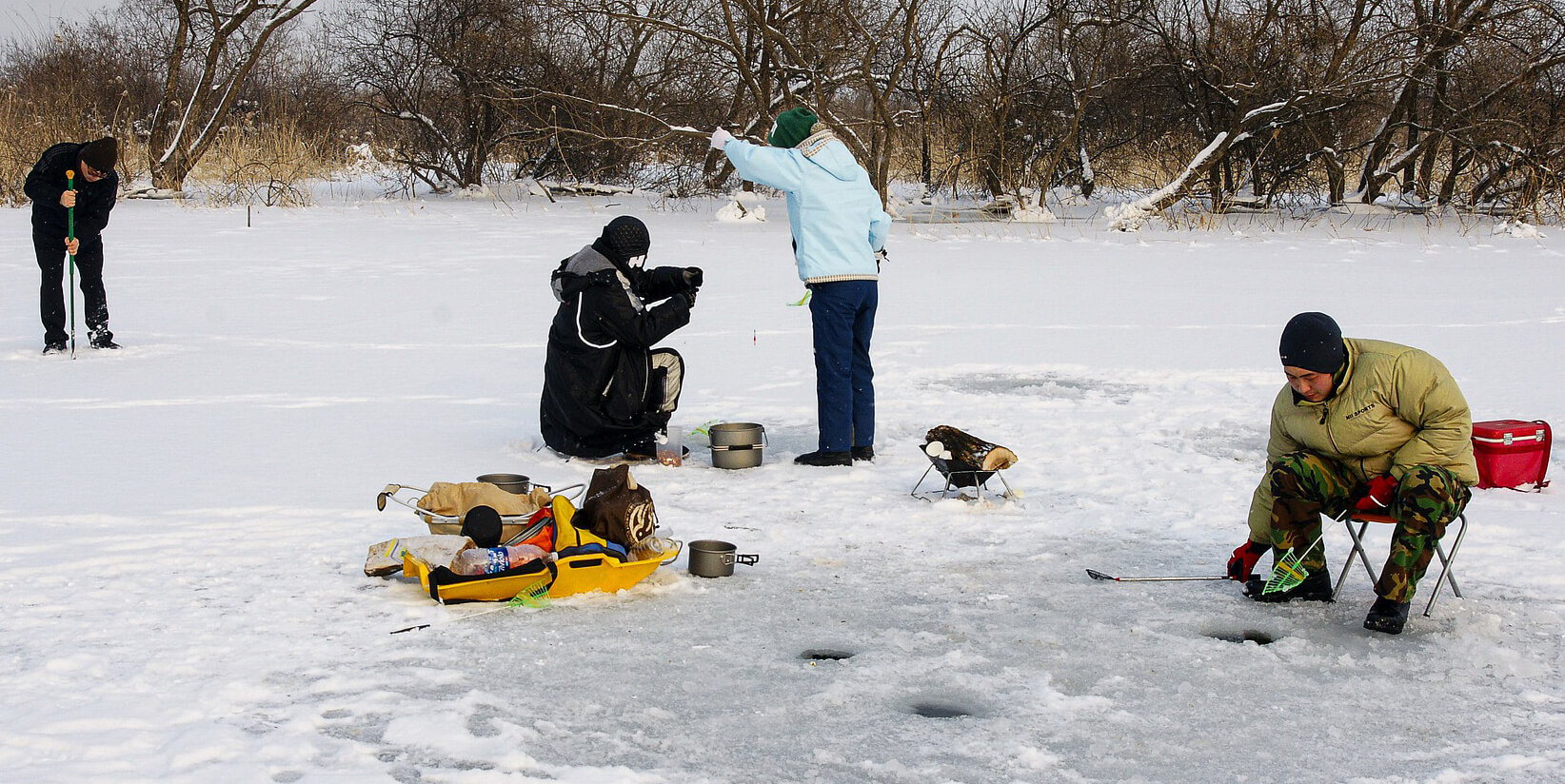
In this case, focusing exclusively on the calendar is stupid: every year more and more temperature anomalies are observed, and the indicators of the past season are not a guideline. In the eastern and northern regions, the ice reaches an acceptable thickness already in early December, and sometimes in November. But one should also take into account the fact that 4-5 days of thaw with an increase in temperature to positive values reduces the strength of the cover by almost a quarter!
But the ice is growing fast enough. If its thickness is less than 10 cm, average daily gain at -5 to C is about 4 cm, and at -15 of C – twice! But the thicker the cover, the slower it grows: it itself is a natural thermal pillow that protects the water from freezing to the bottom, and the inhabitants of the reservoir from death.
Safe thickness indicators
Any experienced winter road will say: the most productive fishing is on the first ice. At this time, even a novice jigger can catch a lot of peaceful fish that have not yet gone into the wintering pits. And what kind of pike is caught during this period! There is nothing to say about perches – they take everything and everyone. However, no catch is worth a person’s life and health, therefore, winter fishing lovers are strongly advised not to go out on the ice until its thickness reaches the conditionally safe 7 cm.However, only 10 cm of cover will provide guaranteed safety, and even then, subject to basic precautions.
The above figures are only relevant for winter freshwater fishing. Let’s look at other criteria as well:
- Moving on skis – from 8 cm. Skis are the optimal means of transportation across large-scale frozen water areas covered with snow (you can’t walk on bare ice on them). They not only accelerate movement, but also contribute to the distribution of a person’s mass over a larger area (not feet, but skis).
- Snowmobiles – from 12-15 cm. A wonderful means of transportation, especially useful for fishing anglers constantly moving around the reservoir.
- Salt water – from 15 cm. Ice from sea water (or with its admixture) should be thicker: it is a priori less durable.
- Children’s fun – from 12 cm. In this case, we mean mainly skating and sledding.
- Organized movement of pedestrians – 15 cm. It is officially allowed to cross from coast to coast where the ice thickness reaches the specified value. Otherwise (outside the places of organized movement) you go at your own peril and risk, and no one is responsible for safety.
- Driving by cars – 30 cm. This value is relevant for organized road crossings on ice, marked accordingly.
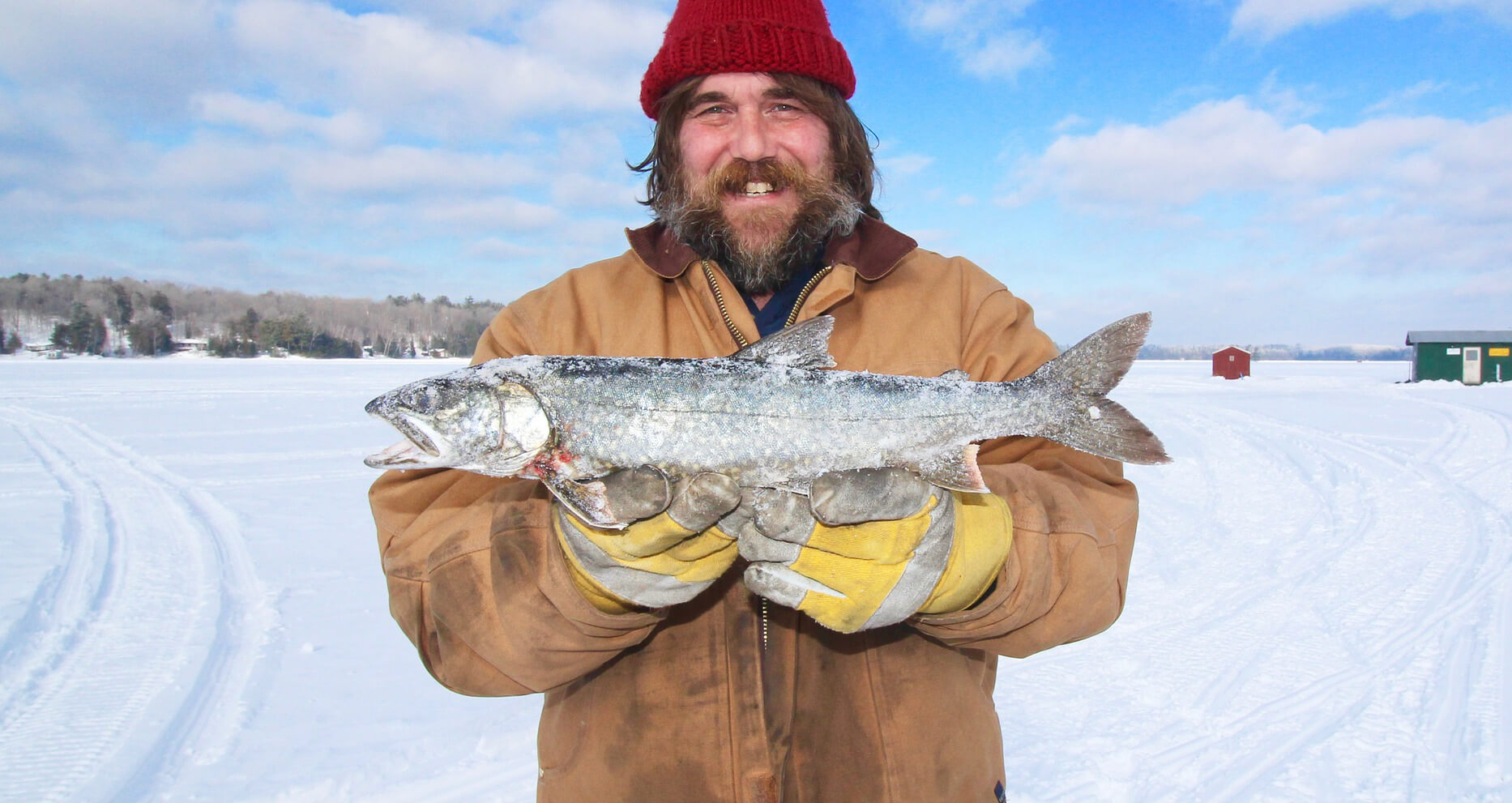
Determination of ice strength
All of the above is fine in theory, but in practice, measuring the thickness of the cover is difficult. It is best to wait for the corresponding message in the fishing newsletters relevant to your region. In any case, at least a week should pass after the establishment of stable frosty weather.
Next, you should evaluate:
- Cover color . The most durable and safest are blue and greenish ice. White and grayish integuments are not so strong, especially if combined with a loose spongy structure and all kinds of blotches (sand, pebbles, algae, and so on).
- The presence of water on the surface . If water appears on the surface, you shouldn’t even go out on it: the risks are enormous.
- Silence of movement . If you step on the ice, and after a while you hear a characteristic crackle, immediately carefully turn back.
An angler can objectively estimate the thickness of the ice only when drilling a hole (tape measure or ruler to help), but for this manipulation it is enough to move away from the coast, which is not always safe. Areas should be especially avoided:
- Covered in snow . Any danger can be hidden under a snowdrift, so if there is an opportunity (not the entire reservoir is covered with snow), it is better to bypass such an area.
- With a strong current and springs . In such places, gullies are possible that are invisible from above.
- Swampy . Swamp gases create a kind of greenhouse effect: even in severe frosts, the ice is pretty much heated from below, which does not contribute to its strength.
- At the mouths and confluence of rivers . There, a flow that is nonuniform in speed and direction is observed.
- Waste water discharge . Such areas should be definitely avoided: wastewater is always warm, and it is not clean.
The abundance of anglers on a small area of ice, on the one hand, testifies to its promising and relative safety, on the other hand, the risks increase: you can fall into a hole slightly covered with ice and covered with snow. In the best case, get your foot wet, but in the cold there is little joy.
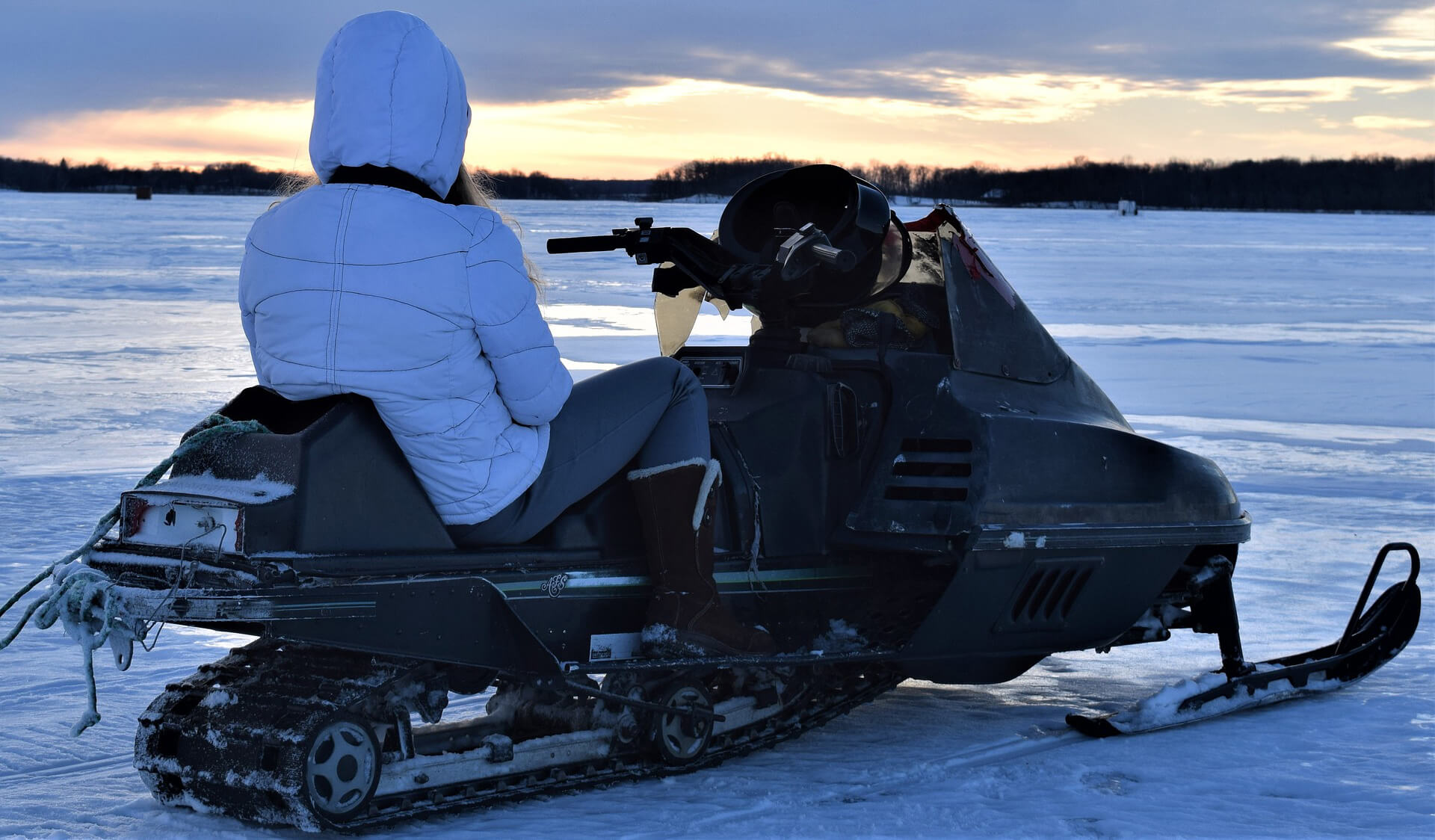
Safe conduct rules
Suppose that in theory the ice thickness has reached the minimum acceptable values, and you go on your first fishing trip of the season. In this case, you should:
- Move at a calm pace . In no case run or jump, do not try to check the strength of the cover with your foot. It is best to walk with a measured step, practically without lifting your feet from the surface (like on skis).
- Checking the path of the foot . This primitive device, like a crowbar on a stick, is necessary for any angler: they can not only tap the ice to choose a safe path, but also clear ice from the holes. As a last resort, use at least a long, sturdy stick.
- Avoid potentially hazardous areas . We talked about this above: everything that differs from the general picture should be considered an anomaly by default.
- Follow the trail . If traces are visible on the snow or a trail is trodden, this indirectly indicates the safety of movement and sufficient ice thickness.
- Carry a load on one shoulder . Position the fishing box or backpack so that you can instantly drop your ammunition and free your other hand. Ideally, if the ice is very suspicious, it is better to drag the load along with you on the rope.
- Walk in a dispersed group . In no case should you walk side by side with a large company, especially in step: the resonance effect and increased load can destroy even a visually strong cover. The optimal spacing is 5 meters or more.
- Provide yourself with elementary means of salvation . It can be a rope up to 20 meters long (with a loop and a load at the end), the same stick, and so on. The rope should lie in an easily accessible place or hang around your neck!
Action in case of contact with water
If you do fall into the water, the main thing is not to panic: chaotic body movements will only aggravate the already unenviable situation. So:
- Try to come to your senses and do not let your head sink into the water;
- Call for help louder and without additional phrases;
- If you can do it easily, throw off your backpack and shoes;
- Do not cling to the edges with your fingers: the ice will crumble, only increasing the area of the hole;
- Try to increase the area of support on the thickness of the ice: spread your arms, put a stick and lean on it, gradually crawling out onto the ice with your chest;
- Make orderly movements with your feet as in crawl swimming: the main goal is to give the body a horizontal position and push yourself onto the ice;
- After getting out, roll away from the hole, crawl a little on all fours, then carefully stand on your feet;
- Immediately (but not by running on ice!) go to a warm place, call a doctor and drink hot tea. Alcohol in this situation will only aggravate the situation.
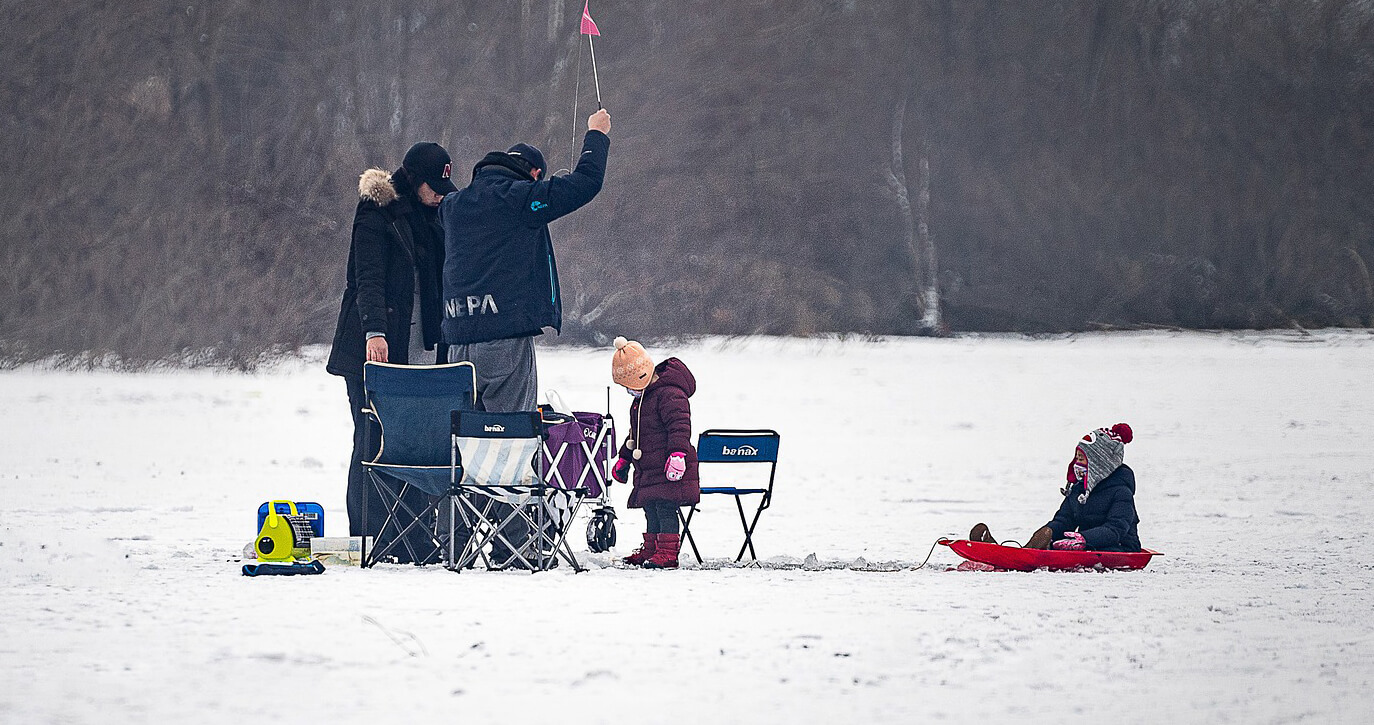
How to save a drowning man
Hearing a cry for help, do not rush to the victim headlong: you risk being in the water next to him. You need to proceed as follows:
- Throw a rope or stretch a stick to the victim. You should approach the hole as carefully as possible, and no more than the length of a rope or a stick – it’s safer. If the ice is thick enough, you can just walk carefully, but it is better not to trust the visual impressions and crawl to the place.
- If there is no rope, you need to spread out on the ice as much as possible and crawl to the edge. We’ll have to wield only hands. Better to give the victim some kind of flat support to distribute the load, such as a ski, a piece of plywood or plastic. You can pull it out both by the hand and by the collar.
- The victim must be pulled out with uniform progressive movements. In this case, you need to remember about the need to distribute the load, that is, do it while lying or sitting.
- When you get the victim out of the hole, help him crawl away from the dangerous area. Let him be in no hurry to get to his feet immediately.
- Ensure the transfer of the victim to a warm place and medical attention – without a doctor’s examination, frostbite can be missed.
Fishing tips
Even if you do not consider yourself as a true fan of winter fishing for now, listen to the recommendations below – maybe one day they will save your life:
- Buy lifeguards. This simple device is also called “ice awls”. It is a cord equipped with strong awls on the handles. By sticking these teeth into the ice and pulling up on them, you can get out of the water as quickly and guaranteed as possible. The lifeguard should be worn while fishing and any movement in a frozen pond only around the neck (not in a box or backpack).
- Note that the ice near the coast is usually thicker. In theory, for measurements, it would be possible to drill a hole a couple of meters from the shore, without putting yourself at particular risk. However, these measurements, unfortunately, will not be correct.
- Don’t forget about spring risks. With stable spring thaws, it becomes no less dangerous in the reservoir. Do not be tempted by the famous pre-spawning rye until you lose your vigilance: the ice is covered with water, changed color, became porous and crackled – ice drift is close. Well, an adult will guess about the danger of riding on ice floes himself.
- If anything – crawl! If you heard a characteristic crackle or determined on other grounds that the ice is extremely unreliable, turn around and slowly walk to the shore. Better to crawl – this is almost guaranteed safety.
- Do not drill holes next to each other. A large number of holes drilled at a small distance from each other significantly reduces the strength characteristics of the ice. Therefore, keep an interval of at least 2-3 meters and do not sit close to other anglers.
Winter fishing is a real pleasure. However, remember that any risk must be justified and kept to a minimum!

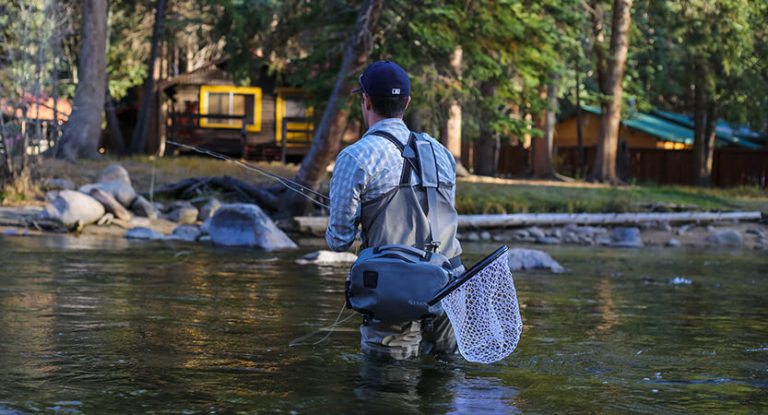
![The 8 Best Fly Reels in 2023 [Buyers Guide] 6 The 8 Best Fly Reels in 2023 [Buyers Guide]](https://trizily.com/wp-content/uploads/2021/12/fly-reel-768x415.jpg)
